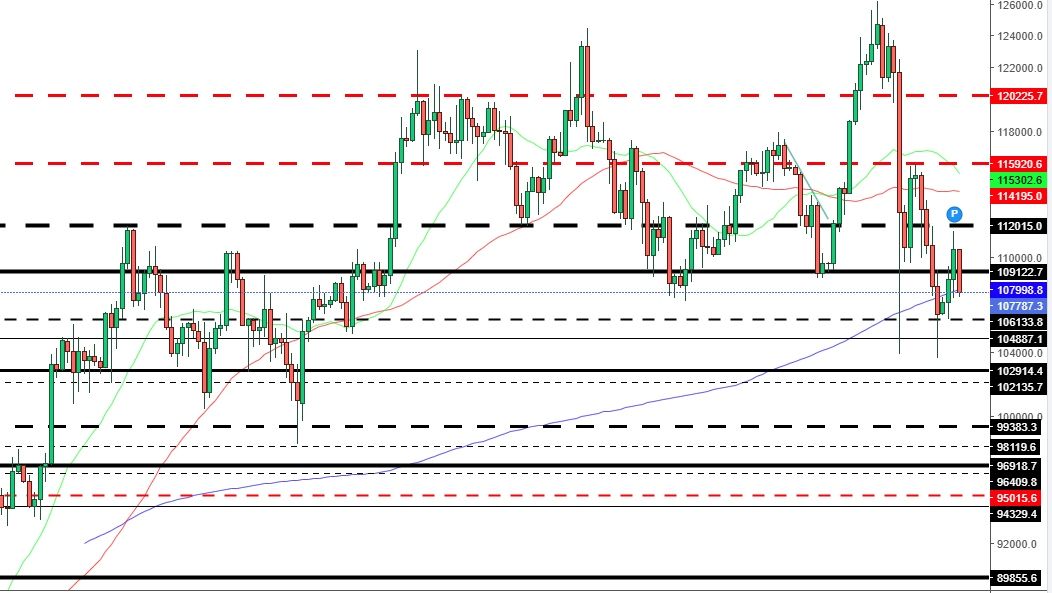Decentralized Bitcoin trading, what not to ignore? If you want to trade Bitcoin, scalping, day trading or you are already doing it, here is some important information.

Decentralized Bitcoin trading, what is it and is it possible?
In the news of decentralized finance, we talk a lot about NFT, Metaverse and other projects, but some people ask the question, is it possible to do decentralized trading and especially on Bitcoin?
While crypto-currencies can be used to purchase everyday items in some stores, they are more commonly traded as digital assets for investment profit.
Impressive profits can be made by buying and selling on crypto-currency exchanges. But prices can be very volatile, so you could lose a lot too.
Decentralized Bitcoin trading:
Bitcoin trading is how you can speculate on the price movements of the crypto-currency without necessarily buying Bitcoin. This is because traditionally, you would have to buy Bitcoin via an exchange, hoping that its price would rise over time. But now, those days are over, currently, crypto-currency traders are increasingly using derivatives to speculate on the rise and fall of prices – in order to make the most of Bitcoin’s volatility and without having to actually buy Bitcoin.
This allows one to trade Bitcoin in one’s own way, scalping, day trading, swing trading as one would with an index or gold.
Some people have already made their experience with a broker, they had to send money, after opening an account, and proceed to a lot of so-called security measures before they could actually trade. Then, once they made money, they were confronted with the broker’s system of claw backs.
In order to avoid all these procedures, and above all, in order not to need to trust a broker, by sending him his money, more and more traders are turning to decentralized trading.
At present, we can say that a good decentralized trading platform offers scalping, day trading and swing trading, as is the case with – gmx.io – gains.trade – dydx.exchange
Decentralized Bitcoin trading, the advantages:
The advantages of decentralized trading are obvious:
- no registration, no need to create an account
- high leverage if desired
- no sending money to a broker
- direct trading from your Metamask account, for example
- no need to apply to get your money back
You should know that on some platforms, you can do virtual trading, to familiarize yourself with the platform. Before you start trading for real, this option allows you to get used to the platform, which is recommended.
Another important point, you can also, on some decentralized trading platforms benefit from chat that allows you to communicate with other traders.
Therefore, yes, it is possible to trade Bitcoin on a decentralized trading platform and take advantage of the benefits offered by the blockchain and decentralization.
Now, you know, that when looking to trade Bitcoin, there is an alternative to using centralized exchanges to profit from the rise and fall of its price. You can trade on Bitcoin’s price movements via decentralized and leveraged trading.
For the record, it’s possible to trade dozens of different crypto-currencies as well as decentralized Forex trading.
Decentralized Bitcoin trading, technical analysis (daily)

Bitcoin: State of Affairs and Key Perspectives for Fall 2025
1) Fundamental Analysis: Institutionalization Rises, Role as “Digital Gold” Strengthens
Several fundamental signals point to a form of maturity for Bitcoin.
- High Institutional Flows: Spot Bitcoin ETFs have attracted billions of dollars in early October, signaling growing interest from institutional investors and the general public.
- Favorable Macro Environment: A weaker U.S. dollar, geopolitical tensions, and the search for alternative assets are prompting some investors to view BTC as a store of value.
However, not all signals are entirely bullish: some retail investors have incurred significant losses in strategies tied to “Bitcoin treasury companies,” underscoring that operational discipline remains uneven. Fundamental Conclusion: Bitcoin’s supporting infrastructure is stronger than ever, thanks to institutionalization and the asset’s reinforced perception. Nonetheless, macroeconomic risks (resurgent strong dollar, regulation) and operational risks (liquidity, treasury management) persist.
2) Technical Analysis: New Highs, but Critical Supports to Watch
In fall 2025, Bitcoin reached a new all-time high above ~$125,000 in early October, driven by an “Uptober” and consolidating institutional adoption.
2.1 Resistances and Supports
- Major Resistance: ~$117,000 to ~$123,000–$126,000 (zone of several recent highs).
- Critical Support: ~$108,000 to ~$105,000 (recently tested).
- If the $108,000 support breaks, the next levels would be ~$103,000 or even ~$94,000–$98,000.
2.2 Momentum and Indicators
- Some oscillators indicate exhaustion, for example, the BTC/gold ratio at a “historically oversold” level for three years.
- Volume remains high but lacks explosive growth, urging caution in confirming the bullish phase.
2.3 Technical Scenarios
- Optimistic: Holding above $108,000, then breaking through ~$123,000–$126,000 → possible return to ~$130,000–$150,000.
- Cautious: Loss of the $108,000 support → test of ~$100,000 or ~$94,000–$98,000.
Technical Conclusion:
The structure remains bullish but hinges heavily on holding key supports. The market is in a consolidation phase after a strong rise, a moment of decision rather than unchecked ascent.
3) Supporting Factors: Institutional, Regulatory, Macro
3.1 Institutional Inflows
The rally is supported by significant financial flows through crypto ETFs, providing a gateway for major investors. 3.2 Regulation and Perception Clearer regulatory frameworks bolster Bitcoin’s “mainstream” profile, reducing the risk of bans or restrictions. 3.3 Macroeconomics The global context—debt levels, monetary uncertainties, trade tensions—supports the idea that Bitcoin can serve as a hedge, though gold remains an alternative safe haven. Summary: These factors provide a more robust foundation than in purely speculative cycles. However, the market may need a new catalyst (new ETF, state adoption, favorable regulation) to reignite strong momentum.
4) Key Risks to Monitor
- Technical Correction: Loss of the ~$108,000 support → significant pullback.
- Macro & Regulation: Strong dollar, restrictive monetary policy, stricter regulation.
- Institutional Disillusionment: Retail losses highlight that execution remains critical.
- Market Consolidation: After a sharp rise, the market may remain in a broad range for weeks/months, limiting quick gains.
5) Perspectives and Strategies for Q4 2025
5.1 Base Scenario (Moderately Bullish)
Holding above $108,000, then breaking through ~$123,000–$126,000 → possible path to ~$130,000–$150,000 by the end of 2025, with a positive catalyst. 5.2 Cautious Scenario Consolidation between ~$108,000–$126,000 for several weeks, offering entry zones for patient investors. 5.3 Bearish Scenario Loss of the ~$108,000 support → correction to ~$100,000 or even ~$94,000–$98,000, implying institutional and macroeconomic retrenchment.
Strategies for Investors/Observers
- Define key levels: support (~$108,000) and resistance (~$123,000–$126,000).
- Risk management: Do not assume the rally will continue uninterrupted.
- Monitor catalysts: ETF announcements, regulation, on-chain institutional movements.
- Medium-term horizon: Exercise caution on entries after a sharp rise.
Conclusion
Bitcoin is at a pivotal moment. Fundamentally, it enjoys unprecedented support (institutional, regulatory, macro), positioning it as a more serious asset than a mere speculative play. Technically, the structure is favorable but fragile: it depends on holding key supports and generating a new catalyst to reignite momentum. As the final quarter of 2025 approaches, the savvy investor will navigate between opportunity and risk: history does not guarantee the top is in, but caution remains essential.
⚠ Disclaimer: This analysis is not financial advice. The cryptocurrency market is volatile, and any investment decision should be based on your own research or made in consultation with a financial professional.
Community of experienced traders in the Forex, commodities and crypto markets, offering articles to help you learn about trading through: relevant information – technical and fundamental analysis. Specificity: specialized in decentralized trading.
Communauté de traders expérimentés sur les marchés du Forex, matières premières, cryptos, offrant des articles permettant de s’éduquer au trading à travers : information pertinente – analyse technique et fondamentale. Spécificité : spécialisé dans le trading décentralisé.
6 commentaires sur « Decentralized Bitcoin trading, what not to ignore? »
Les commentaires sont fermés.